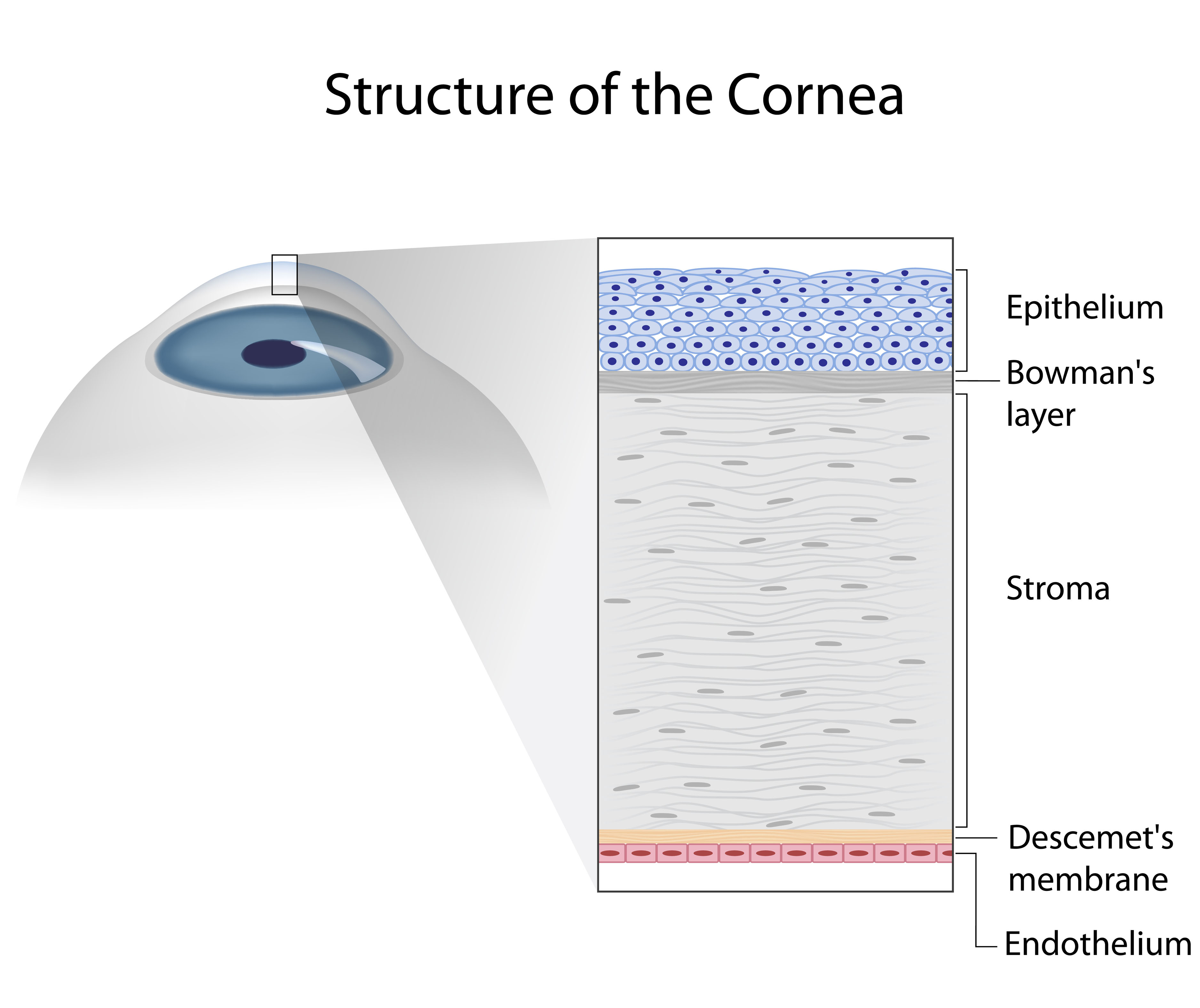Another popular laser vision correction procedure is PRK (Photorefractive Keratectomy), and frequently recommended for patients with low degrees of refractive error and for those who are not suitable for LASIK. In PRK, the epithelium (the superficial layer of the cornea) is manually removed by the surgeon to expose the underlying corneal tissue. The surface of the cornea is then accurately reshaped using the Schwind AMARIS 1050RS Excimer laser. The rapid firing laser will emit 1050 pulses of laser energy per second, at the same time tracking and following any involuntary eye movements that may occur during the procedure. The result is a very quick and accurate treatment.
(the superficial layer of the cornea) is manually removed by the surgeon to expose the underlying corneal tissue. The surface of the cornea is then accurately reshaped using the Schwind AMARIS 1050RS Excimer laser. The rapid firing laser will emit 1050 pulses of laser energy per second, at the same time tracking and following any involuntary eye movements that may occur during the procedure. The result is a very quick and accurate treatment.
A ‘bandage’ soft contact lens is placed over the eye to assist healing of the surface layer (epithelium). The contact lens is usually removed after 2-4 days at your post-operative appointment. The visual recovery after PRK is generally slower than other refractive procedures like LASIK. However, most patients are able to return to normal activities within 4-5 days. Although the procedure itself is quick and painless, those undergoing PRK will experience some discomfort within the first day or two following the procedure which is generally managed with common pain relieving medications (Panadol, Nurofen, etc).
Transepithelial Photorefractive Keratectomy
TransPRK (Transepithelial Photorefractive Keratectomy) is a non-touch single-step procedure where the epithelium, the superficial layer of the cornea, is precisely removed using an excimer laser to expose the underlying corneal tissue. The Schwind Amaris excimer laser then continues to accurately reshape the exposed tissue. The rapid firing laser will emit 1050 pulses of laser energy per second, and at the same rate will track any eye movements that may occur during the procedure, resulting in a very quick and accurate treatment.
A bandage contact lens is placed over the eye to assist epithelial regeneration/healing, which is usually removed 2-4 days following your treatment. TransPRK will provide a quicker recovery and possibly less discomfort compared to PRK treatments.
